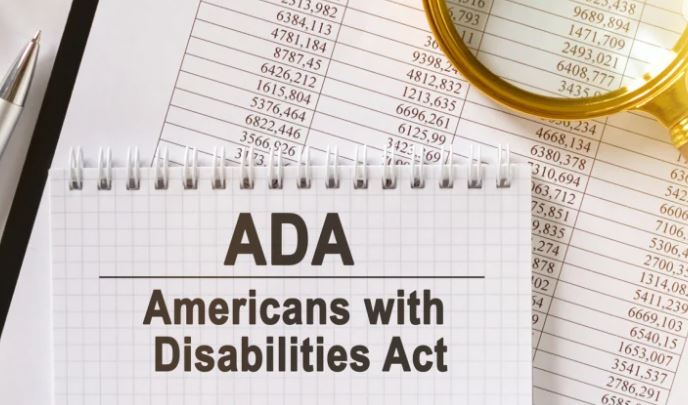Potential leave entitlement doesn’t end with the exhaustion of 12 weeks of leave under the Family and Medical Leave Act (FMLA) but may be extended for a specified period of time under the Americans with Disabilities Act (ADA), so long as that doesn’t result in an undue hardship on the employer. HR needs to coordinate ADA and FMLA obligations, including for health insurance and return to work.
“Employers often believe that their obligation to grant leave ended with the FMLA and fail to consider their obligations under the ADA or equivalent state law for additional leave,” said Heather Boshak, an attorney with Fox Rothschild in Morristown, N.J.
For those workers no longer covered by the FMLA—or who never were covered by it—ADA leave may be required. Thus, even if an employee may not have worked the requisite number of hours to be entitled to leave under the FMLA, if the employee has an ADA-covered disability and needs medical leave, the worker might be entitled to leave as a reasonable accommodation, absent any undue hardship, said Jonathan Mook, an attorney with DiMuroGinsberg in Alexandria, Va.
ADA regulations require that health insurance be continued during ADA leave only if it’s maintained for employees on similar leave.
Before providing ADA leave as a reasonable accommodation, employers should talk with the employee to see if another accommodation that would enable the employee to work without taking leave would be reasonable, said Charles Thompson IV, an attorney with Ogletree Deakins in San Francisco. This back-and-forth discussion with the employee is commonly referred to as the interactive process.
After ADA leave, an employee typically should be returned to their original job, Mook said.
Indefinite Leave
An employer has no obligation to grant an indefinite leave request under the ADA, and such a request can be denied, although an employer must bear in mind the possibility of different requirements under state law, Boshak said.
“An issue sometimes arises when an employee submits a series of definite leave requests in tandem, asking first for three additional months and, when that expires, requesting another three months and so on,” she said. “At some point, such a leave request may constitute an indefinite leave that the employer is not required to accommodate under the ADA.”
Undue Hardship
The leave should have an anticipated return-to-work date, Boshak said. Whether additional leave—and how much—is warranted is analyzed under the ADA undue hardship analysis.
“Undue hardship will be assessed on a case-by-case basis considering a number of factors and may include financial hardship to the company and the disruption to the facility’s operations,” said Jennifer Long, an attorney with Duane Morris in Chicago. The employer has the burden of proving that the requested accommodation is an undue hardship and must prove it with specific supporting facts about the financial or operational hardship, not by using hypothetical impacts to the business, she explained.
In assessing the difficulties that would arise should an employer grant an ADA leave request, Mook said employers should consider such questions as:
- Are there other employees who could fill in for the employee with a disability who is taking unpaid medical leave as a reasonable accommodation?
- Are there certain job tasks that the employee with a disability had been performing that could be shifted to other employees without causing an undue hardship?
- Can certain job tasks that the employee normally performs be put on hold while the employee is out on leave?
Undue hardship results in significant difficulty or expense, Boshak said, and can be difficult to prove.
Health Insurance
The ADA itself doesn’t specifically require employers to maintain health insurance for employees who go out on unpaid leave under the law, Mook said.
However, employers may not treat employees who take unpaid leave as a reasonable accommodation under the ADA differently from other employees who take leave for other reasons, including FMLA leave, he noted. “Hence, I usually advise employers to follow the FMLA rules on health insurance when dealing with an employee who is going out on unpaid ADA leave,” Mook said.
Under the FMLA, if an employee has health insurance through an employer’s group health plan, they can continue their group health insurance coverage during FMLA leave on the same terms as if they had continued to work, the U.S. Department of Labor states in a fact sheet. Employees must be given notice and an opportunity to change plans if group health plans change while they are on FMLA leave.
Return to Work
Return-to-work requirements differ at the end of ADA leave versus the completion of FMLA leave.
Returning the employee to their original job after ADA leave is in line with leave as a reasonable accommodation to enable an employee to do their job after medical treatment and is normally required, Mook said.
If holding the employee’s job open poses an undue hardship or the employee no longer is qualified to perform the job’s essential functions, the employer must reassign the returning employee to a vacant position for which the employee is qualified, Boshak said.
If there aren’t any equivalent jobs available in such a circumstance, the employer may offer a vacant job that would be a demotion, Mook said.
An employee also may be offered a different vacant position upon returning to work from ADA leave if the original position was eliminated for nondiscriminatory, business reasons, Long said.
Under the FMLA, an employee returning to work at the end of FMLA leave must be placed in the job they had when they went out on FMLA leave or in an equivalent position, except when reinstatement of a key employee would cause substantial and grievous economic injury to the employer.
Although employees have job protections during FMLA leave, they aren’t totally exempt from a layoff or other type of termination so long as the action is not related to their FMLA time off.
